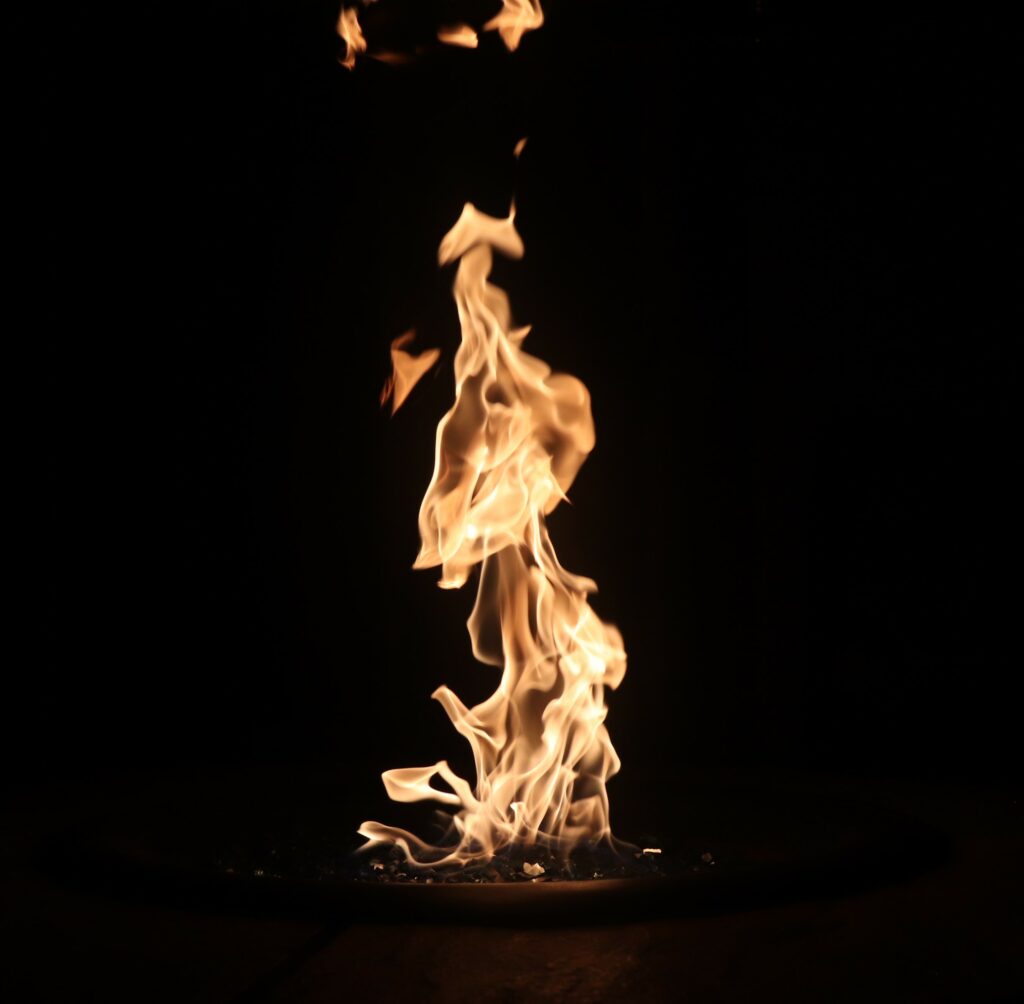This is a photo of the fireplace on my back porch that holds special memories of roasting marshmallows for me. The night this was taken was very windy and pushed the flame completely sideways, but I had my mom, Shannon Fails, quickly hold up a blanket to block the wind and rotate the flame upward.
Camera Settings:
Canon EOS Rebel SL2, 23mm, f/5.6, 1/640 sec, ISO 800, EXP -2.7, no flash

8 Comments. Leave new
Hello Avery,
Really great project! Fire can be tricky to photograph given that it’s its own light source and oftentimes has unpredictable movement. I am surprised you were able to freeze it at only 1/640s! The image turned out great with very dynamic lighting that brings out the texture in the piece. Great ob!
I love the great contrast between the dark, deep background and the bright, lively flames. I’m sure it was very difficult to capture such a clear body of flames as well as the small separated flames. You said that this photo is one in a hundred, so I think this work is precious.
Avery, I think this photo is very aesthetically pleasing to the eye. The way you used the exposure on the camera to capture the length of the flame was excellent. You can see how the flow of the flame and the positioning of the flame in the frame draws your eye from bottom to top of the image. Nicely done!
I really like the stark contrast between the fire and the dark. It really brings out the fire.
First and foremost, I want to commend the captivating effect created by the array of flame colors against a pitch-black backdrop; it truly adds depth and visual intrigue to the image.
Regarding your inquiry about the sharpness and focus of the photograph and how to enhance it, it’s crucial to acknowledge that photographing fire is a challenging endeavor due to its inherently chaotic nature. Capturing the perfect focus for such a dynamic subject can be elusive, especially considering that it is a light source of its own and this leads to even lesser control over the subject lighting.
One method to address this challenge is by employing a narrow aperture with higher f-stops, such as f/14, to achieve a broader depth of field. This approach can increase the likelihood of capturing more elements of the flame in sharp focus. However, it’s worth noting that a shallow depth of field can also yield intriguing results by selectively blurring certain parts of the flame, imparting a three-dimensional quality to the image. Ultimately, the choice between a deep or shallow depth of field becomes an artistic decision.
Overall, this is a great image, and the choice between depth of field styles should align with your artistic vision. The sharpness can also be tweaked in post-processing.
Was it difficult to focus on the moving flame?
It took around 100 photos to adjust the settings and optimize the settings to not capture the blur of the flame moving.
Avery, I really like the dark background contrast against the vibrant colors, especially the white. The flow of the fire pops out here and becomes a clear focus of the image.